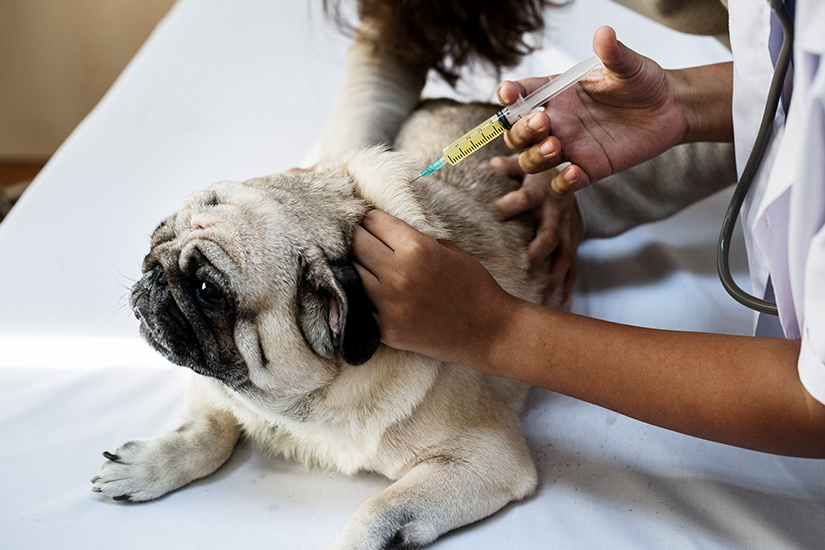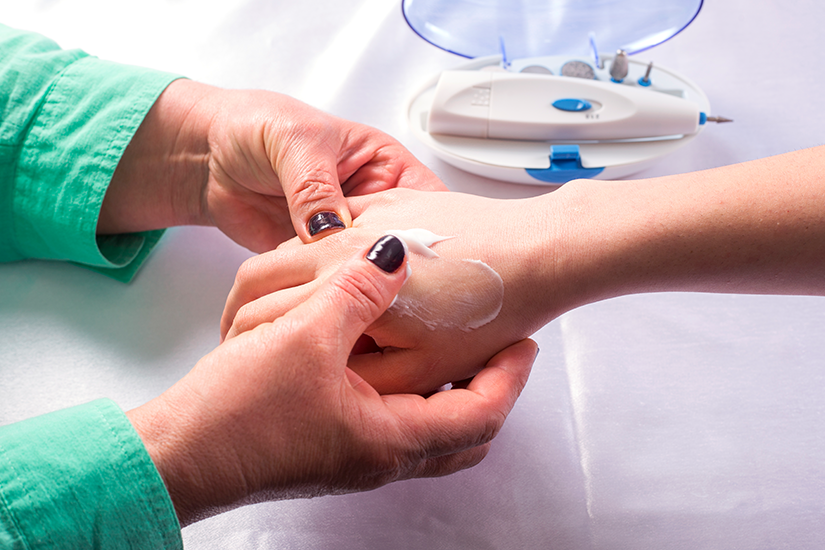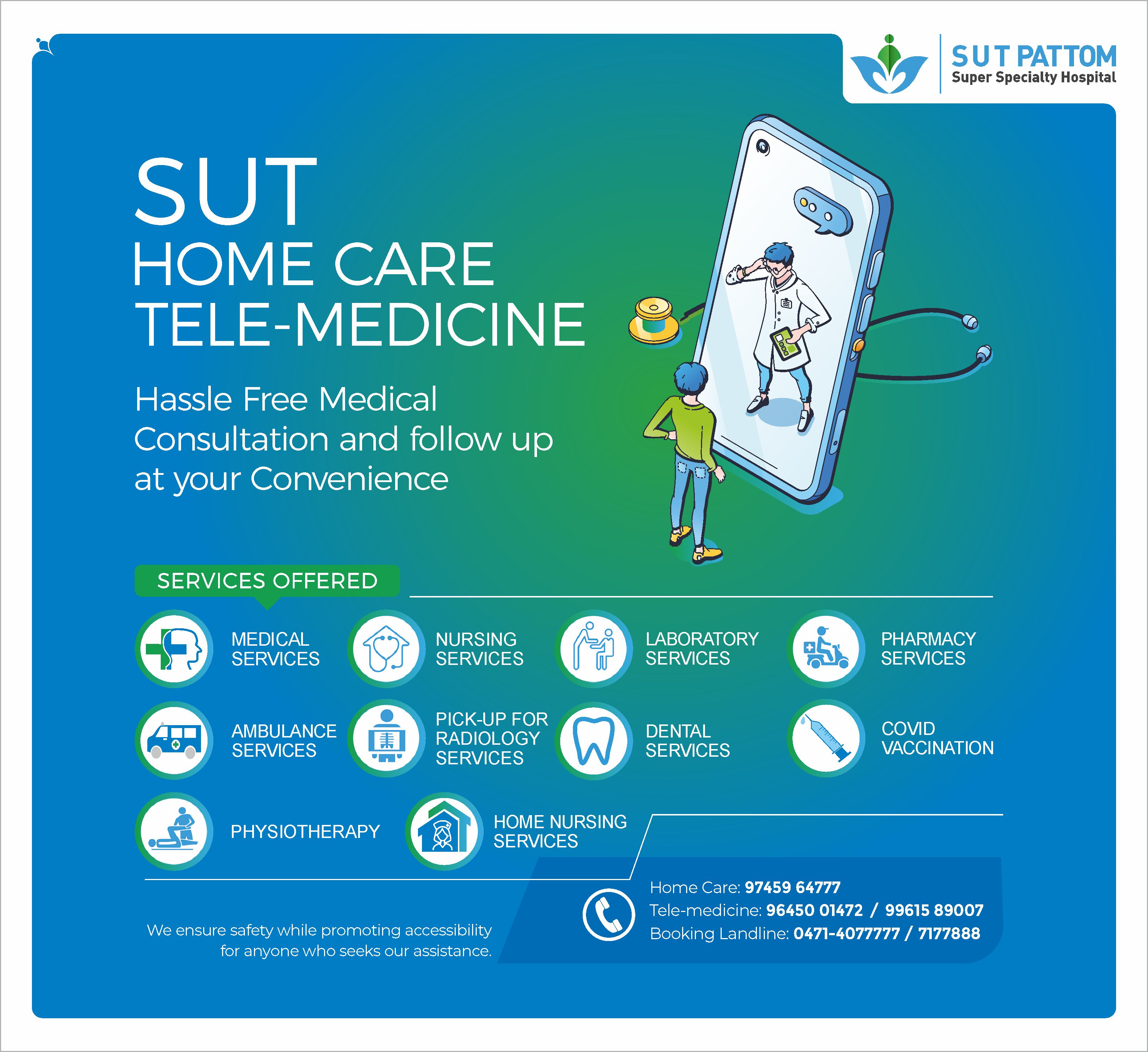- Emergency Ambulance Services
- 8606811111
- 0471-4077777, 0471-7177888
- gro@sutpattom.com
Is Rabies Vaccination Mandatory?
Dr. Sandeep Krishna, Emergency Physician, SUT Hospital, Pattom
The incidence of rabies infection has increased compared to the recent year. Rabies is a deadly viral disease that has no cure, making awareness about its first aid and preventive measures crucial. There is a common misconception that rabies is caused only by dog bites. While dogs account for 95% of rabies cases, other animals like cayotes, foxes, mangooses, racoons, Bats and cats contribute to the remaining 5% etc.
Facts about Rabies: Rabies is transmitted by the saliva of infected animals. Rabies is fatal and attacks the brain. Vaccinating dogs can save lives. It can also be transmitted by contact of saliva with mucous membrane.
What Should Be Done If a Dog Bites?
- Thoroughly wash the affected area with soap and water for at least 15 minutes. Wash in running water. Use a clean cloth to apply pressure to the wound and stop bleeding.
- Seek immediate medical attention at a hospital, as rabies is extremely difficult to treat / almost fatal once symptoms appear.
Rabies Treatment Protocol
According to exposure treatment protocol are in three categories:-
Category 1: Minimal Risk
- Touching, licking intact skin, contact of intact skin with secretions / excretion of animal / human with rabies case.
- If an animal licks intact skin, wash the area thoroughly with soap and water.
- The animal should be kept under observation for any signs of rabies.
Category 2: Moderate Risk
- Nibbling of uncovered skin, minor scratch or abrasions without bleeding.
- If there is a scratch or minor bite without bleeding, wash the area thoroughly and seek medical help.
- A Tetanus Toxoid (TT) injection for wound management and must take full course rabies vaccination.
Category 3: High Risk
Single or multiple transdermal bites or scratches. Licks on wounded skin, contamination of mucous membrane with salica (licks).If the bite or scratch causes bleeding, both rabies vaccination and immunoglobulin are required. In our hospital Monoclonal antibody is preferred as it is safer and has fewer allergic reactions. The dosage of monoclonal antibodies is determined based on the patient’s body weight. The injection is administered at the wound site and intramuscularly. Tetanus and antibiotics prophylaxis must be given.
Rabies Vaccination Types and Schedule
- Intradermal Injection (Under the Skin) – 8 Doses – 4visits
For category II and III Anti rabies vaccines should be administrated. (Injection of 0.1ml reconstituted vaccine on 2 site per visit). One on each deltoid area- 1st dose (Day 0): On the first hospital visit
- 2nd dose – Day 3
- 3rd dose – Day 7
- 4th dose – Day 28
- Intramuscular Injection (Into the Muscle) – 5 Doses – 5 visits
- 1st dose (Day 0): On the first hospital visit
- 2nd dose – Day 3
- 3rd dose – Day 7
- 4th dose – Day 14
- 5th dose – Day 28
Vaccine administered in deltoid (upper arm) or anterio-lateral aspect of thigh and never in gluteal region.
Importance of Rabies Vaccination
Even if a pet dog or puppy bites its owner, taking rabies precautions is mandatory. Rabies is a fatal disease, and proper treatment is essential. All pet dogs must be regularly vaccinated, but even if a vaccinated dog bites, rabies vaccination and immunoglobulin are still necessary. This is because vaccine failure in dogs has been reported in several cases. So rabies vaccination in animal does not guarantee that bitten by those animals would not cause rabies. Hence irrespective of vaccination status of the animal post exposure should be considered.
People who are at high risk of exposure—such as veterinary doctors, dog trainers, and animal handlers—should receive pre-exposure prophylaxis (PrEP) for added protection against rabies.
Proper vaccination and immunoglobulin administration help prevent rabies effectively. While first aid is crucial, it is not a substitute for medical treatment. Always seek professional medical attention as early as possible to ensure complete protection against rabies.
Signs of Rabies in dogs
- Change in attitude and behaviour
- Change in bark
- Excessive salivation
- Extreme excitability
- Fever
- Uncoordinated movements
- Paralysis
- Seizure
- Aggression
- Unable to swallow
The average exacerbation period of rabies is three months. But can range from several days to many years after an exposure.









